Puerto Vallarta is a popular tourist destination located on the Pacific coast of Mexico. The city is known for its stunning beaches, lush vegetation, and diverse wildlife.
One of the most remarkable aspects of the local fauna is the variety of birds that inhabit the region. From the majestic frigatebirds soaring over the sea to the lively tropical birds chirping in the jungles, Puerto Vallarta’s avian population is a true treasure.
Whether you are an avid birdwatcher or simply a nature lover, exploring the habitats and behaviors of these feathered creatures is an experience like no other.
In this article, we will delve deeper into the world of birds in Puerto Vallarta, highlighting their unique characteristics and discussing their significance to the local ecosystem.
1. Neotropic Cormorant
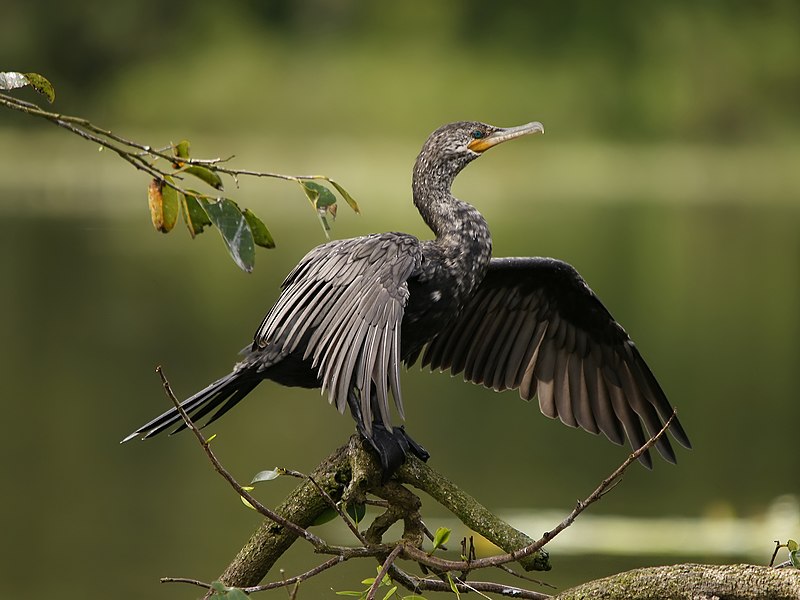
The Neotropic Cormorant, also known as the Olivaceous Cormorant, is a medium-sized bird found in tropical and subtropical regions of Central America, South America and the United States.
It can be identified by its black body with bright yellow facial skin on both sides of its large bill. The tail feathers are short and squared off at the tip.
This species breeds mainly on coasts but will sometimes nest inland near rivers or lakes during certain parts of their life cycle.
They feed mostly on small fish caught while diving underwater but can also eat crustaceans, amphibians and insects.
These birds roost in trees at night to keep safe from predators like foxes which prey upon them when they sleep close to water sources during daylight hours.
Scientific classification:
| Kingdom | Animalia |
| Phylum | Chordata |
| Class | Aves |
| Order | Suliformes |
| Family | Phalacrocoracidae |
| Genus | Nannopterum |
| Species | N. brasilianum |
Also Featured In: Beautiful Brazilian Birds, Rainforest Birds You Should Know
2. Black-Necked Stilt
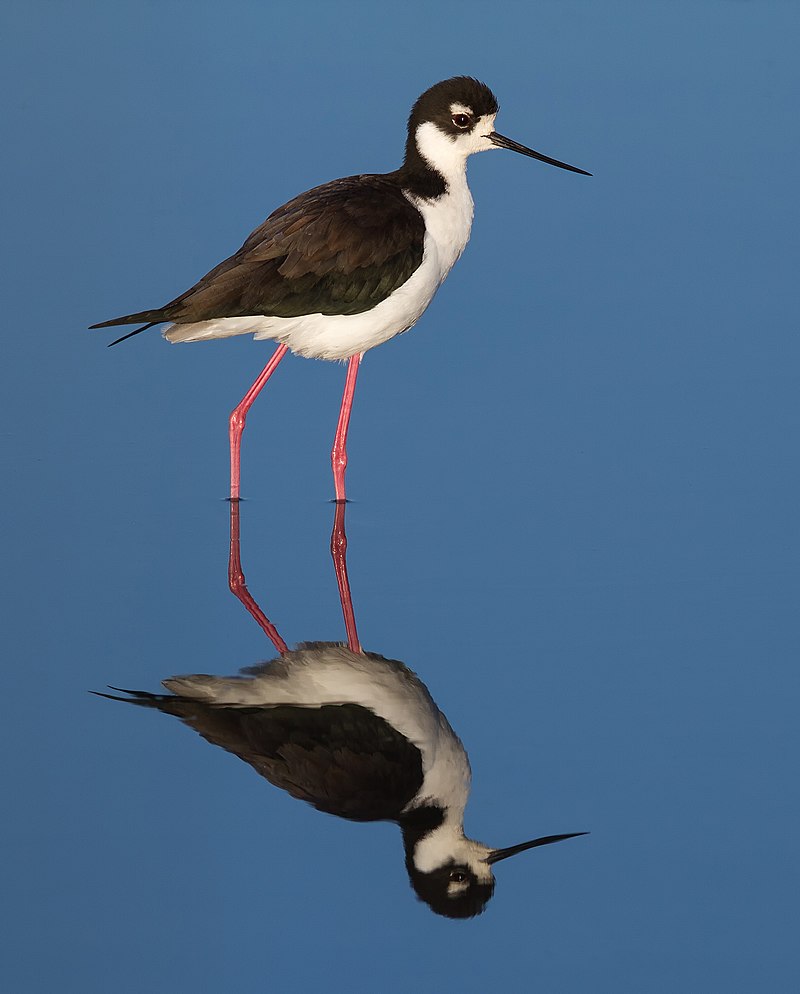
The Black-necked Stilt is an elegant shorebird that can be found from the coastal areas of California to Florida, then south through Central America and Brazil.
It has black upperparts contrasted by long white wings with a glossy sheen. Its striking red eyes are set against its white facial mask while its legs are bright pinkish in coloration.
The Haematopus mexicanus species inhabits marshy wetlands and brackish lagoons where it feeds on insects, crustaceans, small amphibians and fish which they catch using their slender bill or chase after them as they run across the surface of water or mudflats.
This bird typically nests near shallow waters but will use any habitat type if food resources are available nearby making it a highly adaptable species well suited for human altered habitats such as rice fields and sewage ponds.
Scientific classification:
| Kingdom | Animalia |
| Phylum | Chordata |
| Class | Aves |
| Order | Charadriiformes |
| Family | Recurvirostridae |
| Genus | Himantopus |
| Species | H. mexicanus |
Also Featured In: Phoenix Birds You Should Know, Water Birds Live around Us
3. Golden-Cheeked Woodpecker
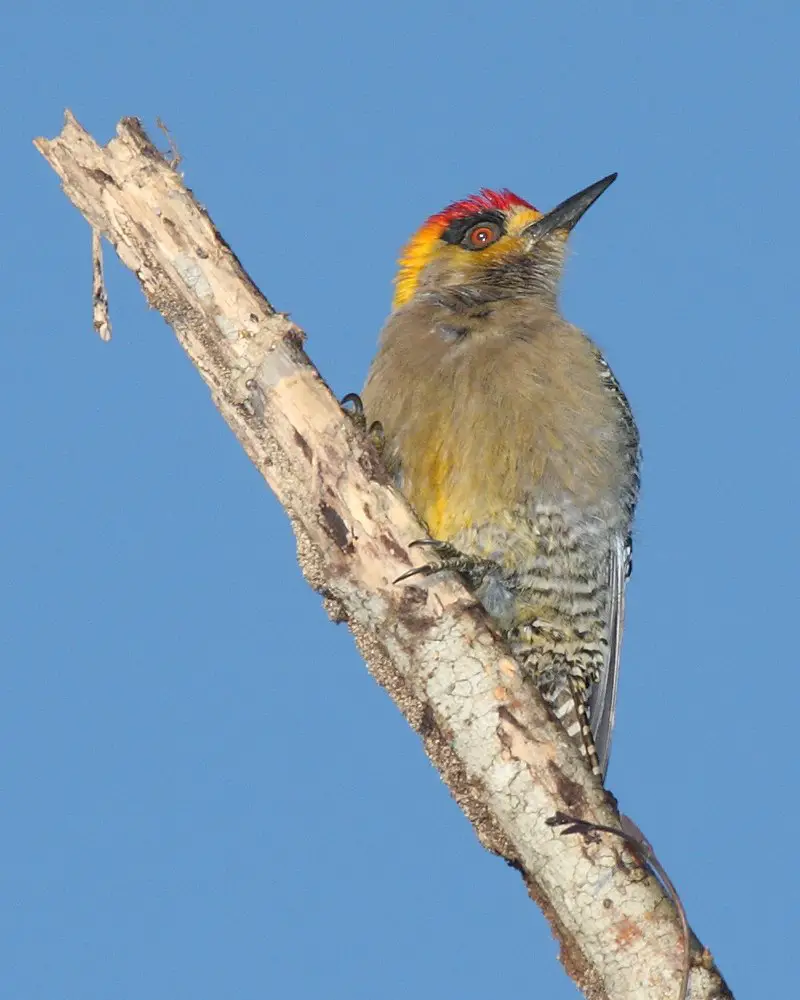
The Golden-cheeked Woodpecker is a unique species of bird found in Mexico. This beautiful creature has golden cheeks and chestnut plumage, with the male sporting a bright red crown on its head.
Endemic to the Pacific coastal strip from Sinaloa to Colima, it can also be seen inhabiting areas along the western mountain slopes of Trans-Mexican Volcanic Belt.
It prefers subtropical or tropical dry forests as their natural habitat where they search for food such as insects and larvae that are hidden deep inside tree trunks and branches.
The Golden-cheeked Woodpecker is an important part of Mexican wildlife which needs protection if we want this species to survive for future generations.
Scientific classification:
| Kingdom | Animalia |
| Phylum | Chordata |
| Class | Aves |
| Order | Piciformes |
| Family | Picidae |
| Genus | Melanerpes |
| Species | M. chrysogenys |
Also Featured In: Top Birds Found in Mexico, Most Common Oaxaca Birds
4. West Mexican Chachalaca
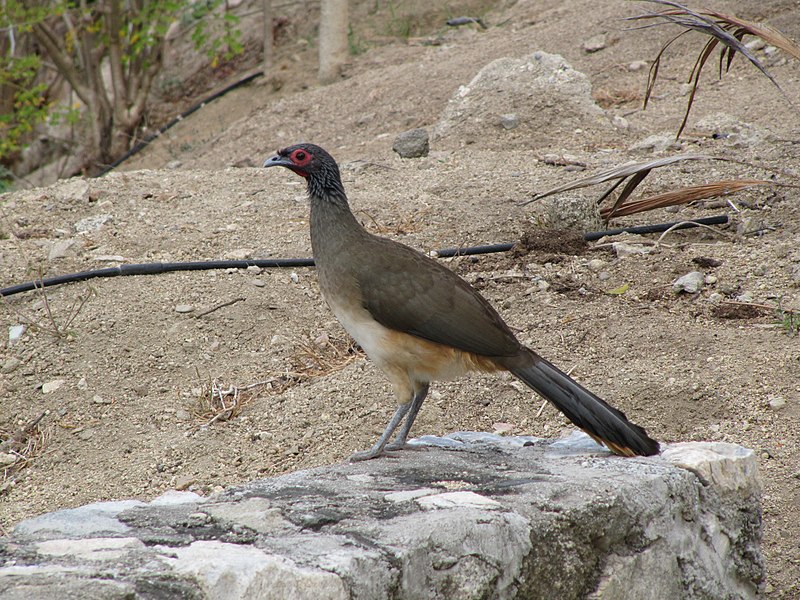
The West Mexican chachalaca is a species of bird from the family Cracidae found in Mexico. It was initially described as Penelope poliocephala and later moved to genus Ortalis.
At one time, it was considered a subspecies of plain chachalaca (Ortalis vetula). The West Mexican Chachalaca has slate-grey plumage with blackish wings and tail feathers that are bordered above by white stripes.
Its head is adorned with an orange tufted crest, while its bill is yellow or greenish-yellow coloured on top and grey underneath.
This medium size bird feeds mainly on fruits and insects but also consumes flowers, leaves & bark occasionally.
They live in small flocks in forests near rivers or humid areas close to mountains ranging between 500m – 3000m elevation up northwards into the Sierra Madre Occidental region of northern Mexico where they can be seen foraging during early mornings before flying off singly at dusk back towards their roosting sites amongst trees inside dense woods.
Scientific classification:
| Kingdom | Animalia |
| Phylum | Chordata |
| Class | Aves |
| Order | Galliformes |
| Family | Cracidae |
| Genus | Ortalis |
| Species | O. poliocephala |
5. Russet-Crowned Motmot
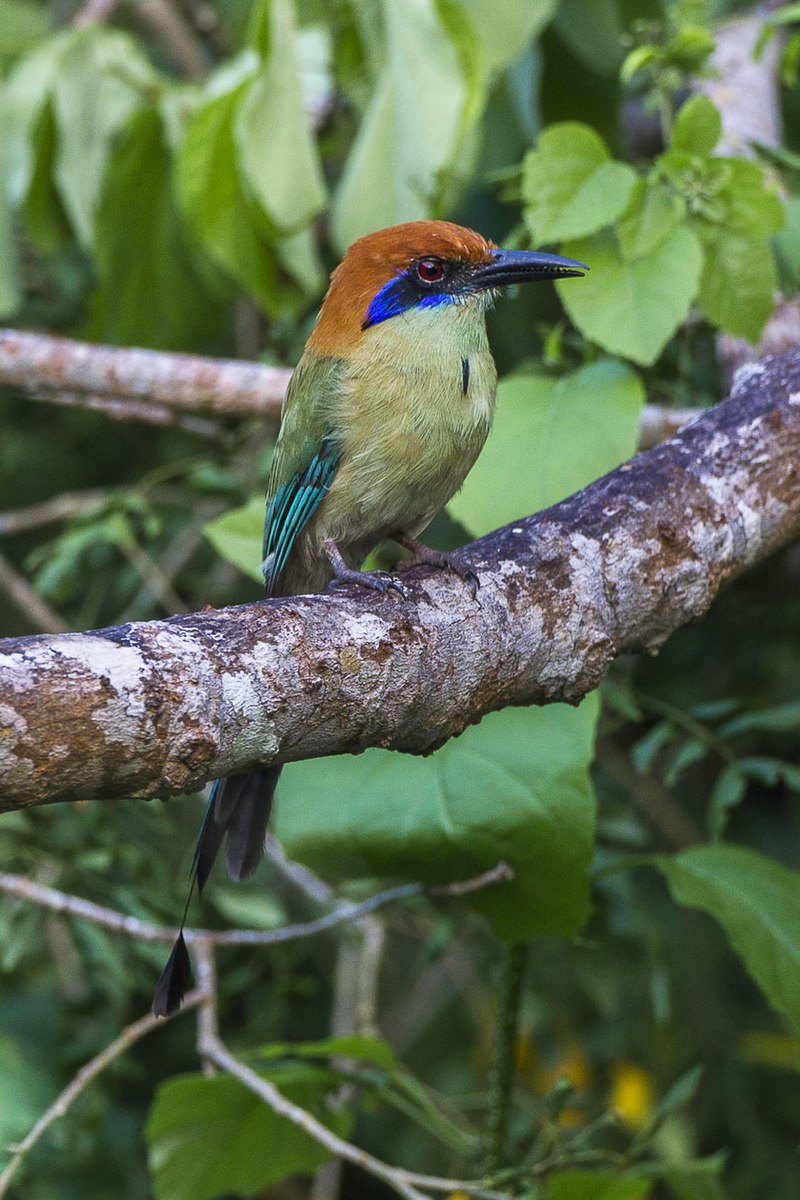
The Russet-crowned Motmot is an exotic species of bird native to north-western Mexico and central Guatemala. It is a year round resident in tropical dry broadleaf forests, scrubland and other areas with plentiful vegetation.
This type of motmots are easily identified by their reddish-brown crest on top of their heads which gives them the name ‘russet’ crowns.
These birds have also been observed displaying unique behaviors such as “bill-wagging” where they will move their bills from side to side while perched atop branches or trees.
They can be found eating insects, reptiles, amphibians, fruits and occasionally small mammals like mice or bats.
The russet crowned motmot population has declined due to deforestation but conservation efforts are helping protect this beautiful creature so that future generations may enjoy it’s majestic beauty for years to come.
Scientific classification:
| Kingdom | Animalia |
| Phylum | Chordata |
| Class | Aves |
| Order | Coraciiformes |
| Family | Momotidae |
| Genus | Momotus |
| Species | M. mexicanus |
Also Featured In: Birds that You’ll Find in Chiapas, Birds that Live in Morelos
6. Broad-Billed Hummingbird
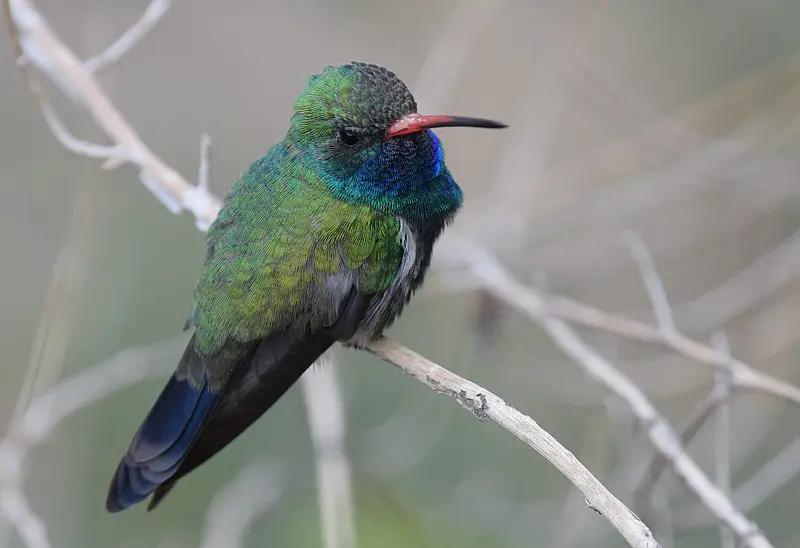
The Broad-billed Hummingbird is a small species of hummingbird that can be found in Mexico and the southwestern United States.
It has distinctive sexual dimorphism, with females resembling their juvenile counterparts more than males do.
This bird stands out thanks to its bright colors and broad, red bill. Other common names for this species include Colibri Mexicano (Spanish) or Mexican Hummingbird.
The Broad-billed usually nests on trees or shrubs near streams but may also occupy wooded areas or gardens close by human settlements during wintertime.
They feed mainly on nectar from flowers while supplementing their diet with insects depending on availability of prey items as well as seasonality changes throughout their range area.
Scientific classification:
| Kingdom | Animalia |
| Phylum | Chordata |
| Class | Aves |
| Order | Apodiformes |
| Family | Trochilidae |
| Genus | Cynanthus |
| Species | C. latirostris |
Also Featured In: Summer Birds that Live around Us, Green Birds in That Live in Texas
7. Colima Pygmy Owl
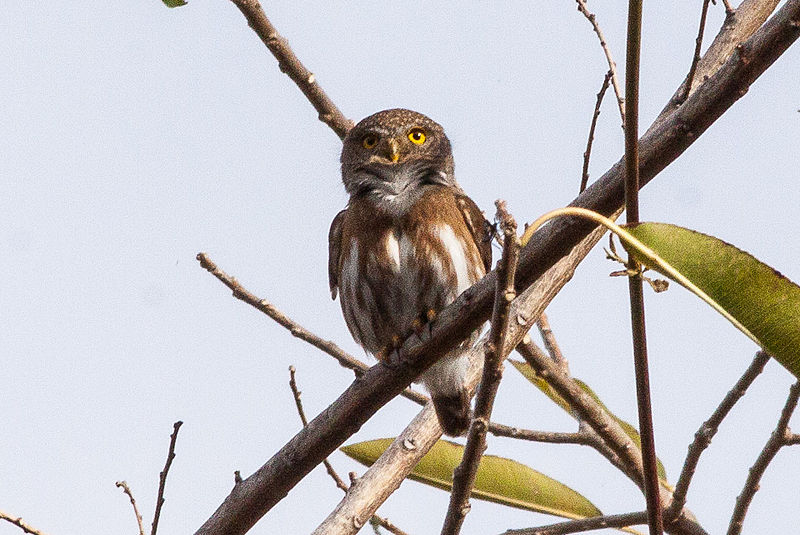
The Colima pygmy owl is a species of owl endemic to the western part of Mexico. It belongs to the family Strigidae and typically grows up to 8–9 inches in length, with males being slightly smaller than females.
The International Ornithological Committee recognizes three subspecies: G. palmarum palmarum, G. p oberholseri and G .p g.
They are mostly active during twilight hours when they hunt for small mammals like mice or voles from their perches atop trees or shrubs using their excellent hearing capabilities along with sharp eyesight which allows them superior vision even at night time.
During daytime, these owls can be found roosting on tree branches keeping cool under shady foliage while also remaining camouflaged amongst its surroundings due to its grey-brown coloration that helps it blend into bark patterns perfectly.
Scientific classification:
| Kingdom | Animalia |
| Phylum | Chordata |
| Class | Aves |
| Order | Strigiformes |
| Family | Strigidae |
| Genus | Glaucidium |
| Species | G. palmarum |
Also Featured In: Most Common Birds in Michoacán,
8. Little Blue Heron
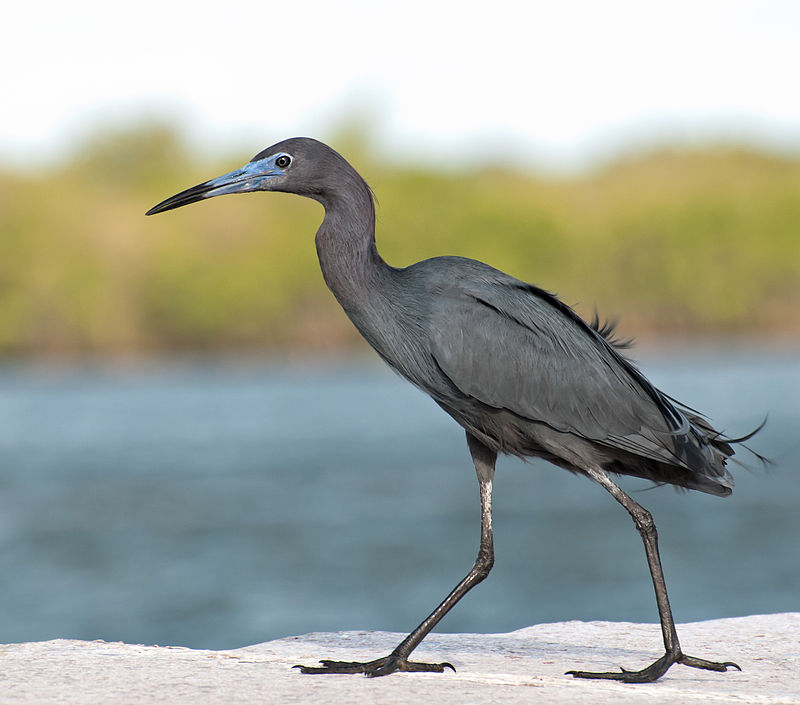
The Little Blue Heron is a small, darkly-colored heron with two-toned bill. Juveniles are completely white, similar to the Snowy Egret. In breeding season, adults develop unique coloration on their head and legs.
The bird has an expansive habitat range that covers much of the Americas from North America all the way down to South America.
They feed mostly in shallow water areas like tidal flats or marshes and eat small aquatic animals such as fish, frogs and crustaceans.
This species can also be found along coastal regions where they gather at night for roosting purposes during winter months when food sources become more scarce due to migration patterns of its prey animals.
These birds have adapted well over time allowing them to persist in most habitats throughout their wide range even despite environmental changes caused by human activities such as pollution or development projects near wetlands ecosystems which are essential for this species’ survival.
Scientific classification:
| Kingdom | Animalia |
| Phylum | Chordata |
| Class | Aves |
| Order | Pelecaniformes |
| Family | Ardeidae |
| Genus | Egretta |
| Species | E. caerulea |
Also Featured In: Blue Birds You’ll Found around Us, Everglades Birds
9. Berylline Hummingbird
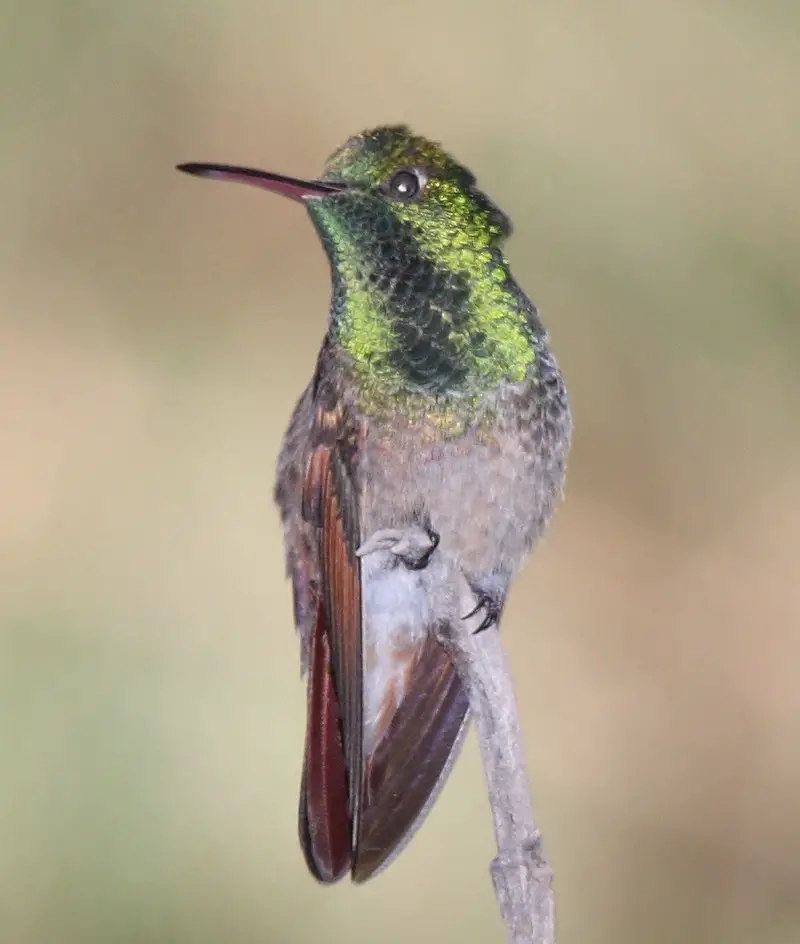
The Berylline Hummingbird is a vibrant species of hummingbird found in Central America and the United States.
It has emerald green upperparts, rufous sides and underparts, white tips to its tail feathers, as well as an iridescent purple throat patch.
These birds are highly territorial and will defend their territories against intruders with impressive aerial displays.
They feed on nectar from flowers such as bromeliads, columbines or agaves while searching for insects which they catch mid-air by hovering near foliage or flying low over meadows.
The Berylline Hummingbird is considered a Least Concern species due to its wide distribution range but it faces threats from habitat loss caused by urbanization and farming practices that reduce suitable nesting sites available for this bird.
Scientific classification:
| Kingdom | Animalia |
| Phylum | Chordata |
| Class | Aves |
| Order | Apodiformes |
| Family | Trochilidae |
| Genus | Saucerottia |
| Species | S. beryllina |
Also Featured In: Most Beautiful Birds in Guatemala,
10. Bare-Throated Tiger Heron
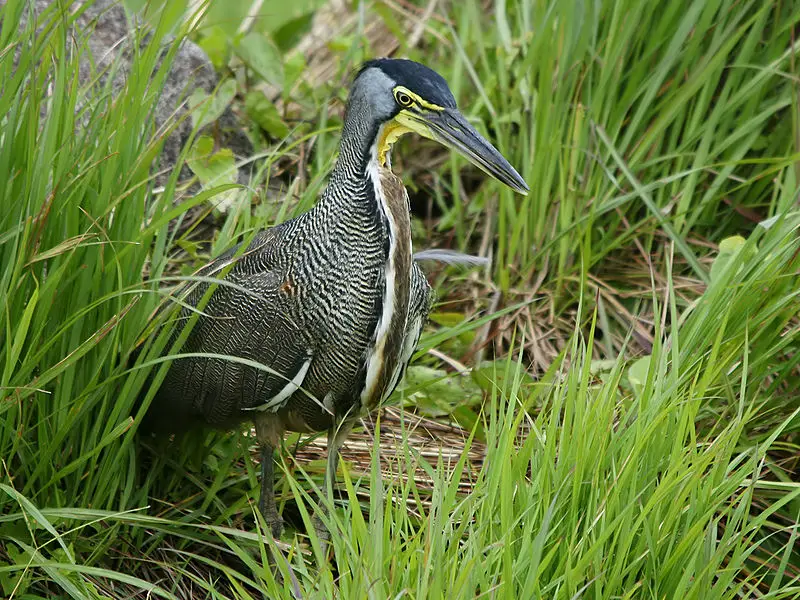
The Bare-throated Tiger Heron is an impressive wading bird belonging to the heron family, Ardeidae.
It has a length of 80 cm and weighs 1,200 grams. Found from Mexico to northwestern Colombia with one recorded sighting from the United States in Texas, it prefers more open habitats such as river and lake banks than other Tigrisoma herons.
Its plumage is blackish above with white spots on its back while its lower parts are chestnut brown or rufous in coloration.
The head and throat have bare yellow skin that can turn bright red when alarmed or during courtship displays.
Additionally, these birds feed mainly on fish but also eat amphibians, reptiles and aquatic insects which they capture by standing still before suddenly snatching them up.
Scientific classification:
| Kingdom | Animalia |
| Phylum | Chordata |
| Class | Aves |
| Order | Pelecaniformes |
| Family | Ardeidae |
| Genus | Tigrisoma |
| Species | T. mexicanum |
Also Featured In: Colorful Birds of Nicaragua, Most Common Birds You’ll Find in Quintana Roo
11. Black-Bellied Whistling Duck
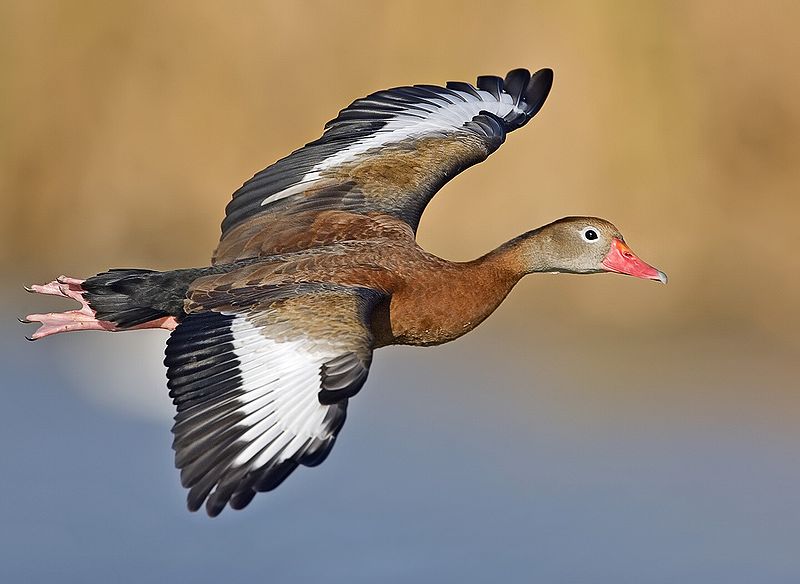
The Black-bellied whistling duck is a unique species of bird that can be found in the southern United States, Mexico, Central and South America. This small waterfowl has distinct black plumage on its belly which gives it its name.
Its call is also distinctive as it makes high pitched whistles to communicate with other members of its flock.
It prefers wetland habitats such as marshes, ponds and lakes where they feed on seeds and aquatic plants like wild rice or pondweed.
During breeding season these birds form monogamous pairs nesting in trees near bodies of water.
They are migratory birds but some may remain year round depending upon local climate conditions making them relatively common sights in certain areas during winter months when most other ducks have migrated further south for warmer weather.
Scientific classification:
| Kingdom | Animalia |
| Phylum | Chordata |
| Class | Aves |
| Order | Anseriformes |
| Family | Anatidae |
| Genus | Dendrocygna |
| Species | D. autumnalis |
Also Featured In: El Salvador Birds, Birds that Live around Central Florida
12. Stripe-Headed Sparrow
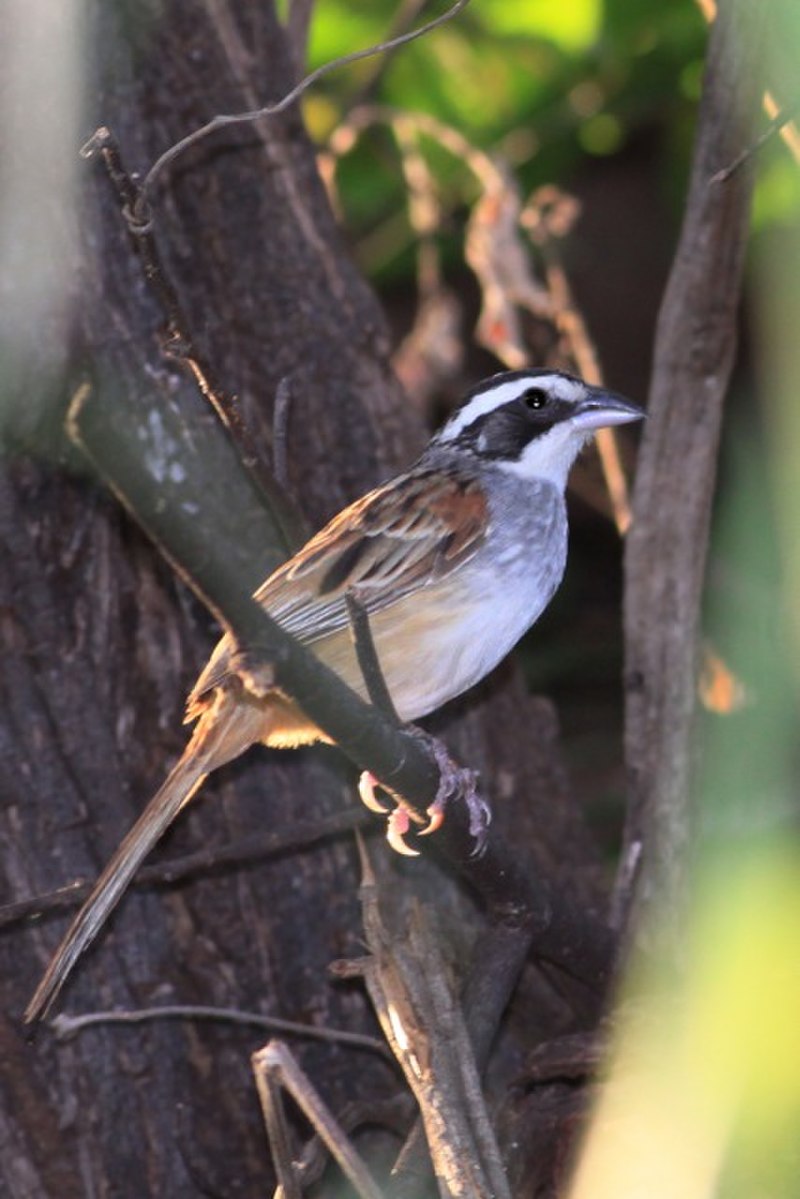
The Stripe-headed Sparrow is an American bird that breeds in the Pacific coastal south-western Mexico and northern Costa Rica.
It prefers to live in savannahs, scrubby areas, and lowlands up to 1,800 m (5,900 ft) in altitude.
They are quite common birds with a distinct look; they have white stripes on their heads which helps them stand out from other species of sparrows.
The rest of its body is mostly greyish brown or tan with dark brown streaks along its back as well as some yellow feathers around the face area for further distinction.
These birds feed mainly on grasses and grains but also enjoy insects such as beetles whenever possible.
All in all these small yet beautiful creatures make for lovely additions to any backyard or outdoor space you may have.
Scientific classification:
| Kingdom | Animalia |
| Phylum | Chordata |
| Class | Aves |
| Order | Passeriformes |
| Family | Passerellidae |
| Genus | Peucaea |
| Species | P. ruficauda |
13. Boat-Billed Heron
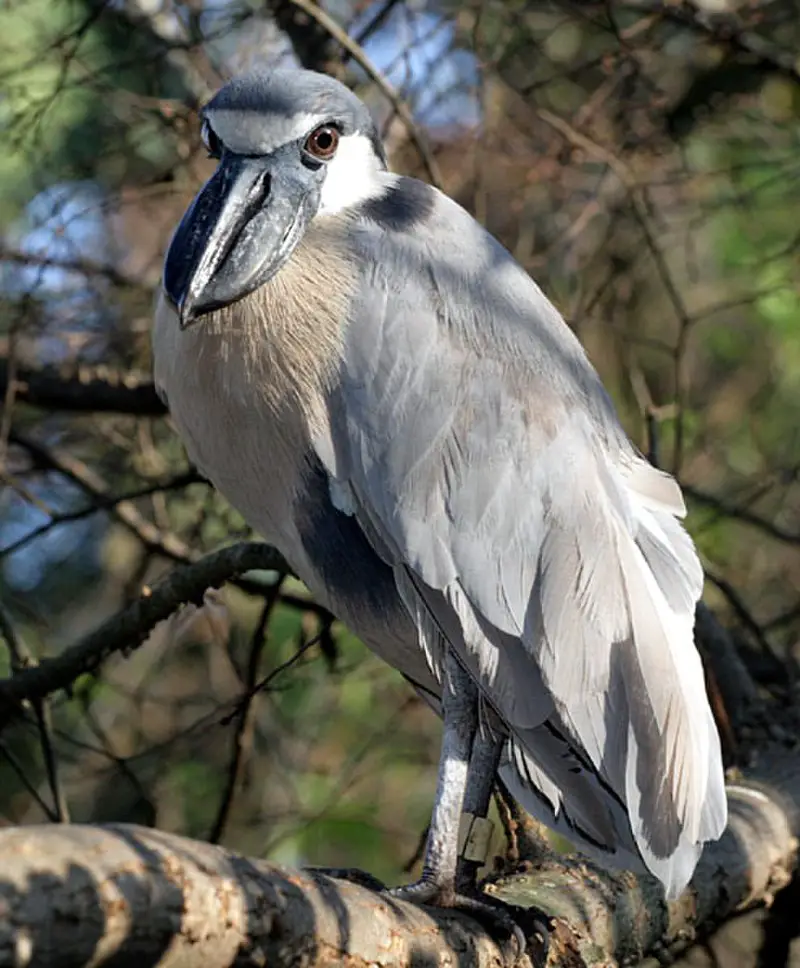
The Boat-billed Heron is a unique member of the heron family, living in mangrove swamps from Mexico to Peru and Brazil. It has an atypical bill shape compared to other members of its family which gives it its name.
Due to its nocturnal behavior, this bird breeds semi-colonially in mangrove trees during the night and lays two to four blue eggs per clutch that take around three weeks for incubation.
This species also exhibits some interesting hunting techniques such as spreading out its wings while standing still on branches or even submerging itself partially into water until prey passes by within reach; so they can snatch them quickly with their long beaks.
Conservation efforts must continue due to threats posed by habitat loss and human disturbance.
Scientific classification:
| Kingdom | Animalia |
| Phylum | Chordata |
| Class | Aves |
| Order | Pelecaniformes |
| Family | Ardeidae |
| Subfamily | Tigriornithinae |
| Genus | Cochlearius Brisson, 1760 |
| Species | C. cochlearius |
Also Featured In: Costa Rica Birds,
14. Wood Stork
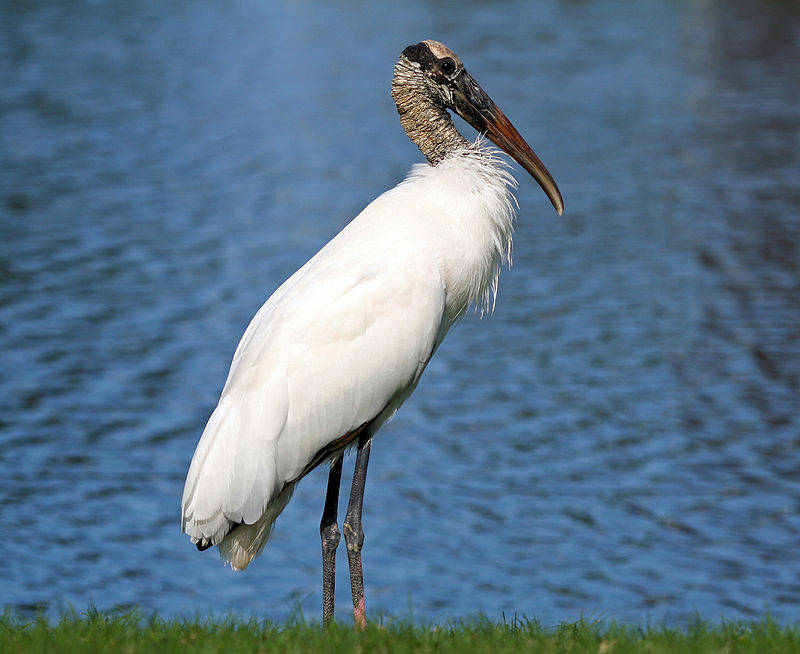
The Wood Stork is a large wading bird found in subtropical and tropical habitats throughout the Americas, including the Caribbean. It stands out from other storks due to its distinctive white head and neck feathers.
The wood stork has an impressive wingspan of up to 6 feet wide, making it one of the largest birds in North America.
Although usually seen near water sources such as swamps or wetlands looking for food like fish, crabs, frogs and even small reptiles they can sometimes be spotted far away from their natural habitat during migration season.
This species is also one of few that breeds annually in North America with nests typically built on platforms made by humans or animals near water bodies or ponds.
Scientific classification:
| Kingdom | Animalia |
| Phylum | Chordata |
| Class | Aves |
| Order | Ciconiiformes |
| Family | Ciconiidae |
| Genus | Mycteria |
| Species | M. americana |
Also Featured In: Georgia Birds, Wetlands Birds You Should Know
15. Blue-Black Grassquit
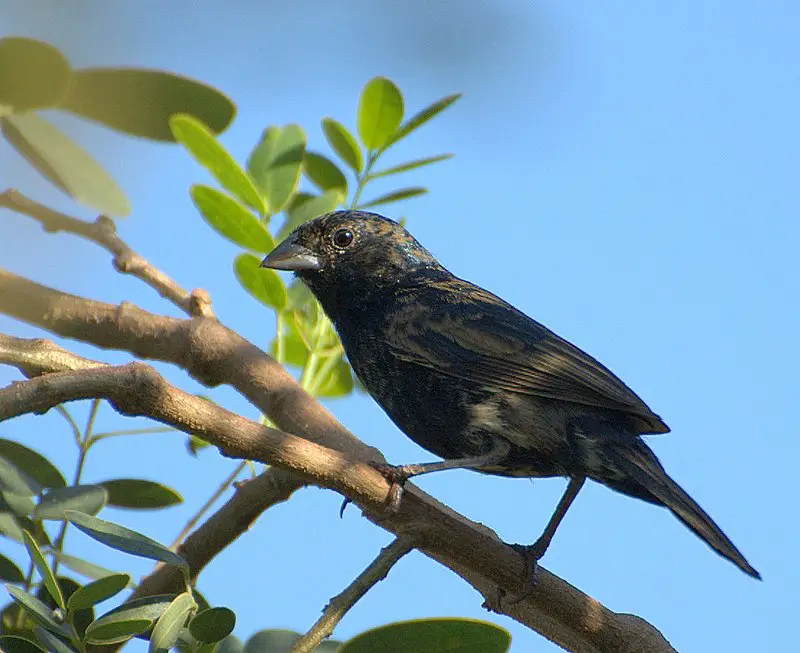
The Blue-black Grassquit is a small and vibrant bird belonging to the tanager family, Thraupidae.
It has an extremely wide range of distribution stretching from southern Mexico all the way through Central America and South America as far south as northern Chile, Argentina and Paraguay.
The male of this species features glossy blue-black feathers with yellowish primaries whereas females are less brightly coloured having predominantly greyish brown plumage.
They feed on insects such as ants, grasshoppers and beetles along with some grains they find in their habitats which include open woodlands near water sources or marshes.
These birds build nests made out of leaves lined with soft material like hair or wool at low level vegetation often close to water bodies where they can raise clutches up to two times during breeding seasons depending upon weather conditions around them.
Scientific classification:
| Kingdom | Animalia |
| Phylum | Chordata |
| Class | Aves |
| Order | Passeriformes |
| Family | Thraupidae |
| Genus | Volatinia Reichenbach, 1850 |
| Species | V. jacarina |
Also Featured In: Trinidad and Tobago birds,
16. Bat Falcon
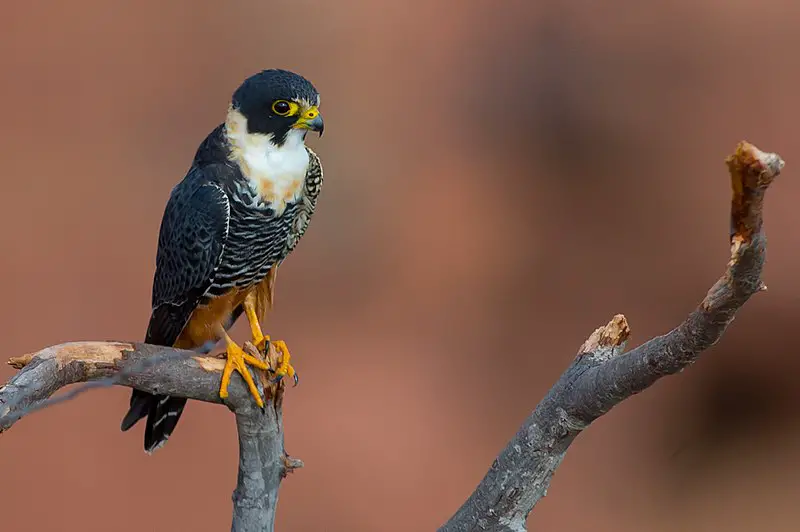
The Bat Falcon is a small falcon found in Mexico, Central and South America, as well as Trinidad. It was previously known as Falco albigularis but has since been renamed to its current name.
This bird of prey looks similar to the Orang-utan with its brownish-gray plumage and bright blue cere on top of their beaks. They are generally around 9 inches long with a wingspan reaching up to 20 inches across.
The Bat Falcons prefer open savanna or woodland habitats where they can hunt for insects or small birds during the day.
These birds rely heavily on flying insect populations which makes them vulnerable when these numbers drop due too environmental changes such climate change making it important that we protect this species from further endangerment by preserving suitable habitat types so they can continue living there happily.
Scientific classification:
| Kingdom | Animalia |
| Phylum | Chordata |
| Class | Aves |
| Order | Falconiformes |
| Family | Falconidae |
| Genus | Falco |
| Species | F. rufigularis |
Also Featured In: Falcons Species, Birds You’ll Find in South Texas
17. Western Kingbird
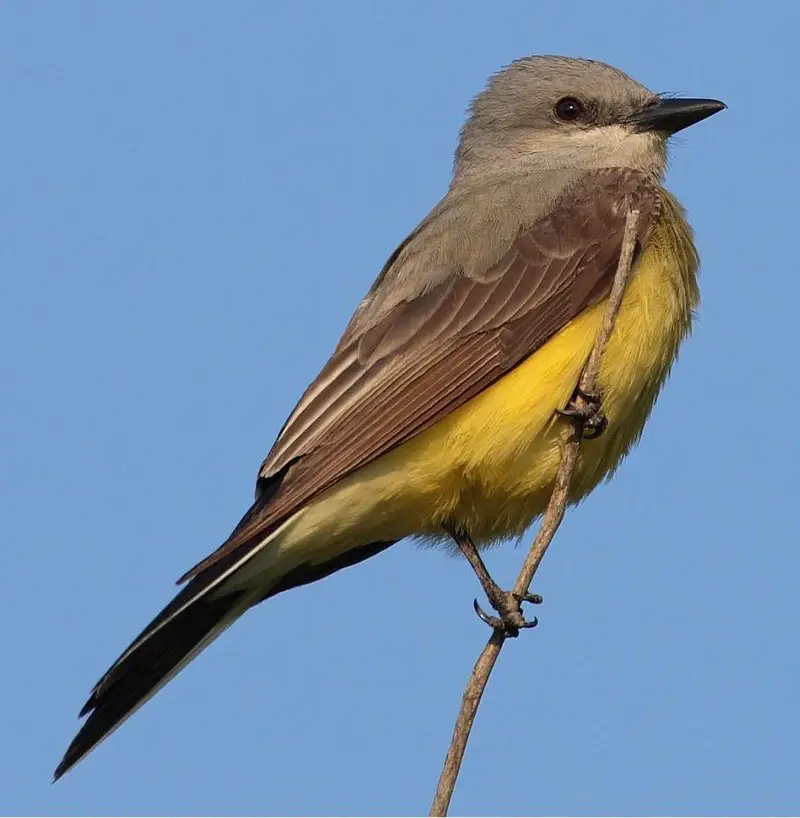
The Western kingbird is a large tyrant flycatcher native to western North America. It has striking plumage, with gray and yellow feathers tinged with crimson during courtship or when defending territory from intruders.
As is characteristic of its kind, the Western Kingbird exhibits highly territorial behavior towards other birds in its area.
They are found as far south as Mexico, inhabiting open habitats near bodies of water such as rivers and lakes.
While their primary diet consists of insects like bees and flies that they catch mid-flight, it also includes fruit for variety during winter months.
The species have recently seen an increase in population due to conservation efforts which aim to protect these beautiful creatures.
Scientific classification:
| Kingdom | Animalia |
| Phylum | Chordata |
| Class | Aves |
| Order | Passeriformes |
| Family | Tyrannidae |
| Genus | Tyrannus |
| Species | T. verticalis |
Also Featured In: Flycatchers Species, Birds that Live in the Deserts
18. White-Eared Hummingbird
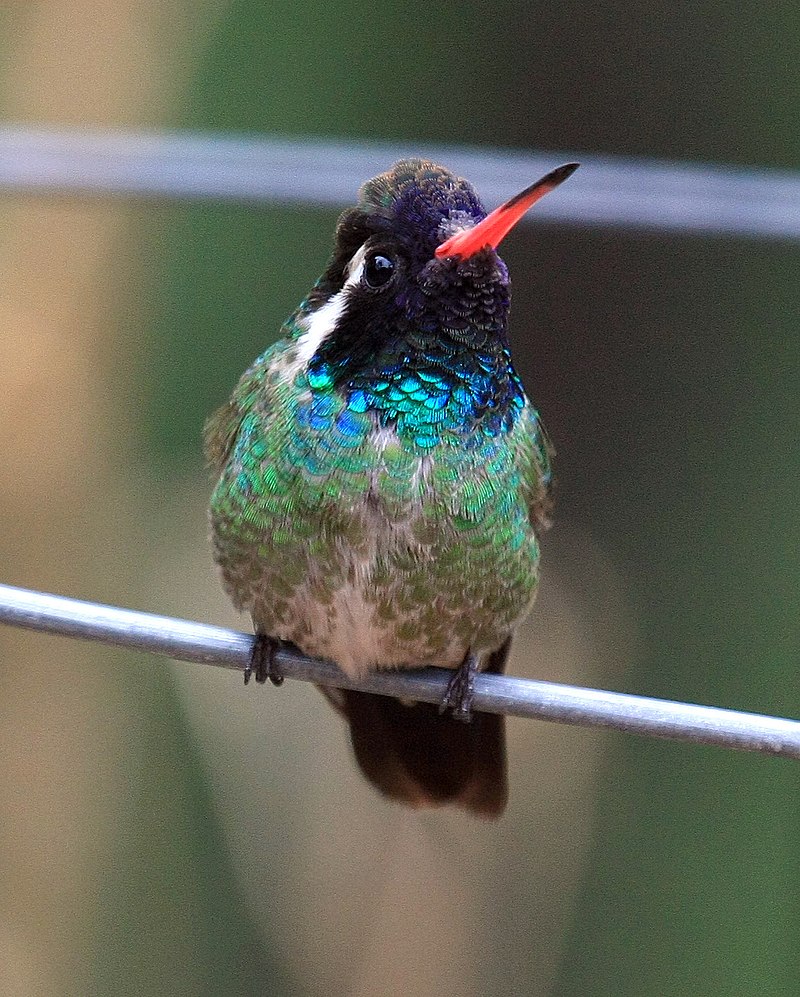
The White-eared Hummingbird is a species of bird found in the southwestern United States to Nicaragua. It belongs to the Trochilini tribe, subfamily Trochilinae and genus Basilinna.
With its white ear coverts, dark green back and rufous tail, it stands out among other hummingbirds with its unique plumage. This small but beautiful bird has an average length of 4 inches and weighs only 0.1 ounces.
Its diet consists mainly of nectar from flowers as well as insects which they feed on while hovering midair or perching atop plants or branches.
The White-eared Hummingbird is also known for their courtship displays where males perform aerial dives at high speeds that create loud noises.
These birds are amazing creatures that bring much joy when seen up close in nature.
Scientific classification:
| Kingdom | Animalia |
| Phylum | Chordata |
| Class | Aves |
| Order | Apodiformes |
| Family | Trochilidae |
| Genus | Basilinna |
| Species | B. leucotis |
Also Featured In: Hummingbirds Species, Common Birds of Mexico City
19. Black-Capped Gnatcatcher
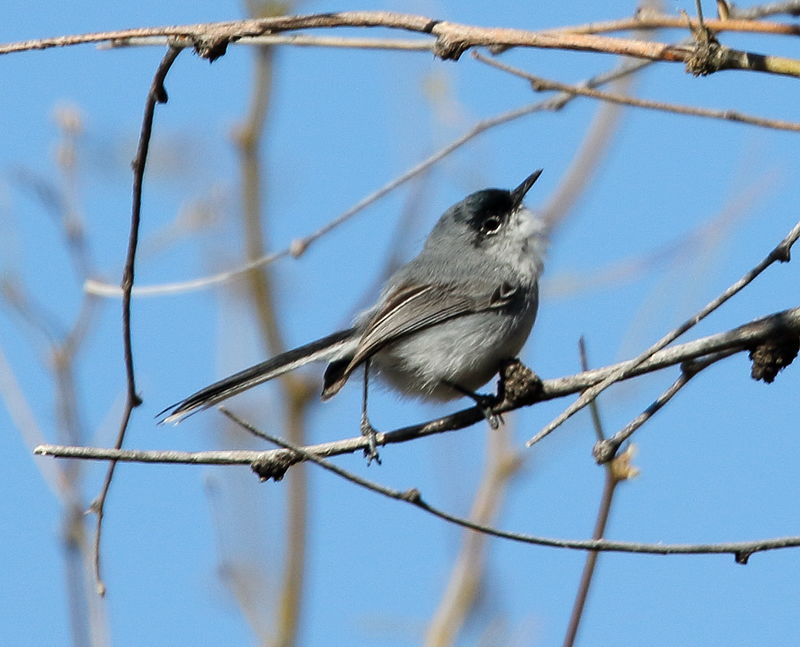
The Black-capped gnatcatcher is a small bird belonging to the Polioptilidae family. It can be found in both the United States and Mexico.
While it has been considered to be the same species as the white-lored gnatcatcher in the past, it is now recognized as a distinct species.
There are two different subspecies of the Black-capped gnatcatcher, known as Polioptila nigriceps nigriceps and P. n. restricta.
These birds are known for their small size and distinctive black cap on their heads. They are commonly found in riparian areas, oak woodlands, and desert scrub habitats.
The Black-capped gnatcatcher feeds primarily on insects and uses a variety of calls to communicate with other birds in their social group.
Scientific classification:
| Kingdom | Animalia |
| Phylum | Chordata |
| Class | Aves |
| Order | Passeriformes |
| Family | Polioptilidae |
| Genus | Polioptila |
| Species | P. nigriceps |
20. Black-Throated Magpie-Jay
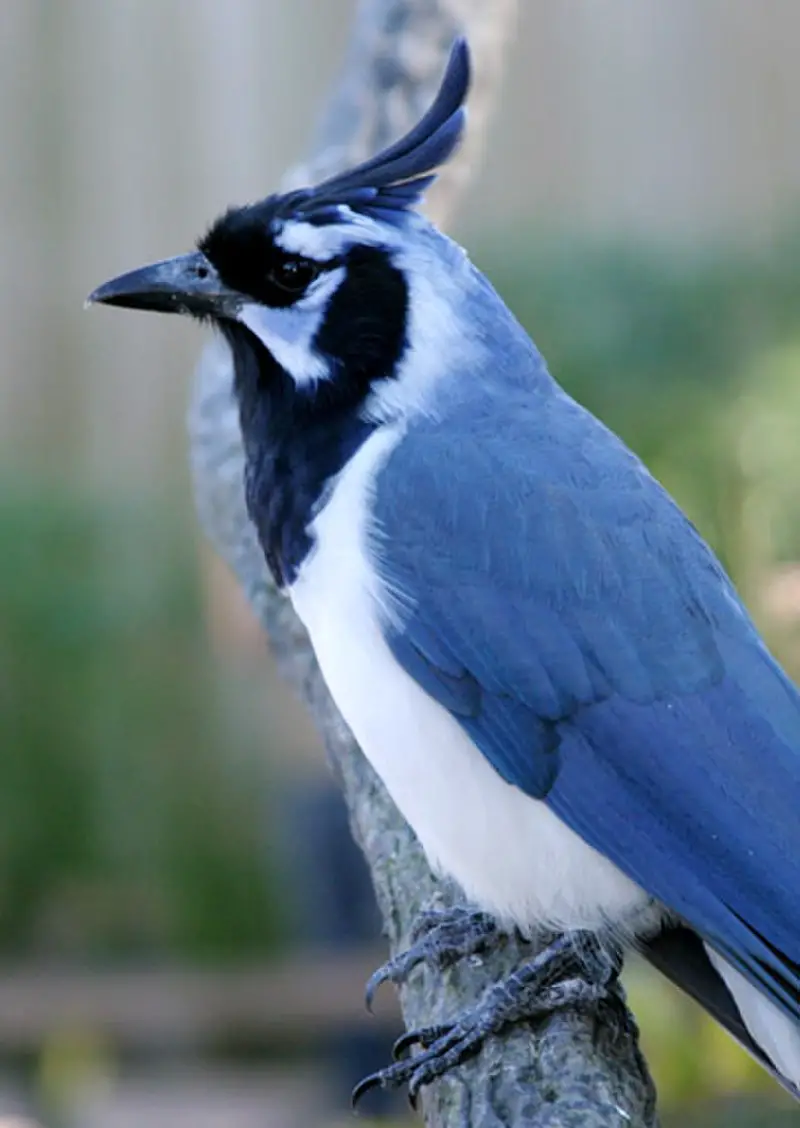
The Black-throated magpie-jay is a visually stunning bird with a long tail found in the northwest region of Mexico. It was described for the first time in 1829 by the Irish zoologist Nicholas Aylward Vigors.
The bird was first discovered in San Blas, Nayarit, Mexico, where it was obtained by explorers on an expedition to explore the western coast of North America.
The bird’s vibrant colors and unique features make it stand out from other bird species in its vicinity.
With its gorgeous black throat and blue feathers, the Black-throated magpie-jay is often admired by bird enthusiasts and scientists alike.
Its distinct appearance and remarkable characteristics have captured the fascination of many, making it an important species to study and conserve.
Scientific classification:
| Kingdom | Animalia |
| Phylum | Chordata |
| Class | Aves |
| Order | Passeriformes |
| Family | Corvidae |
| Genus | Calocitta |
| Species | C. colliei |
Also Featured In: Most Common Birds Found in Nayarit,
21. Bright-Rumped Attila
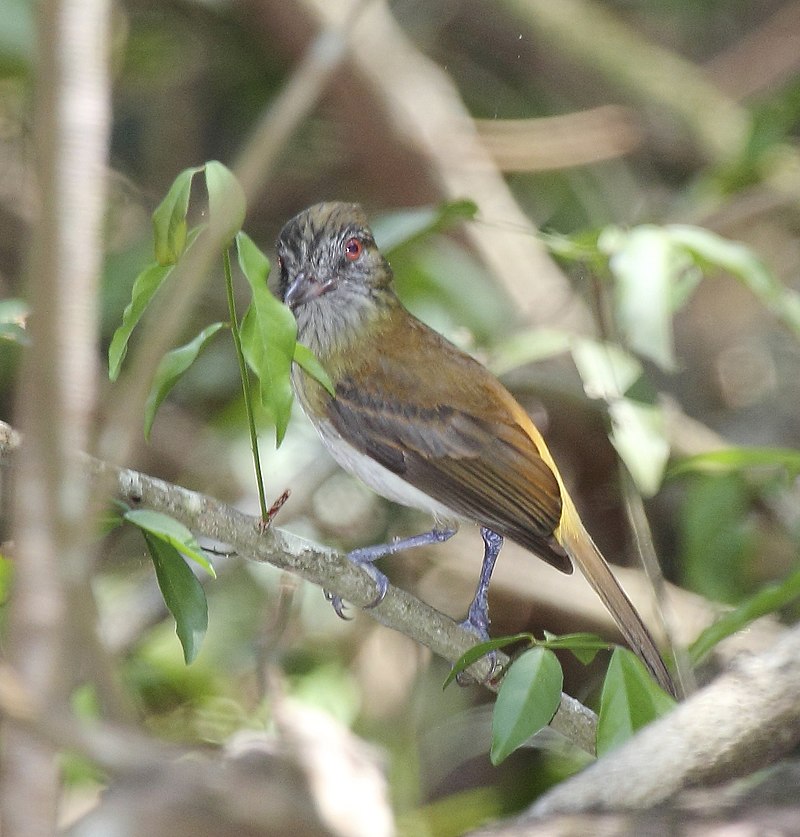
The bright-rumped attila is a small passerine bird found in northwestern Mexico to Brazil, and on Trinidad.
It is a member of the tyrant flycatcher family and has a hooked, slightly upturned bill and upright stance.
This bird is relatively large compared to other flycatchers, measuring 7 inches in length. Its most notable feature is its bright rump, which contrasts with its duller, brownish upperparts.
The bright-rumped attila is polymorphic, meaning that it has different colorations in different regions.
Despite its name, this bird doesn’t have a particularly bright coloration, but it has a distinctive call that’s used to establish its territory.
The bright-rumped attila is primarily insectivorous and can be found in a variety of habitats, including forests, woodlands, and scrublands.
Scientific classification:
| Kingdom | Animalia |
| Phylum | Chordata |
| Class | Aves |
| Order | Passeriformes |
| Family | Tyrannidae |
| Genus | Attila |
| Species | A. spadiceus |
Also Featured In: Cozumel Birds You Didn’t Know,
22. Citreoline Trogon
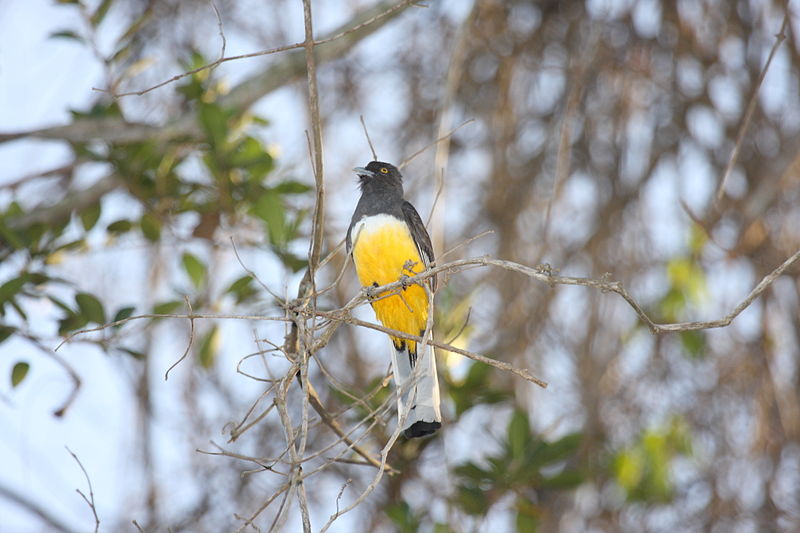
The Citreoline trogon bird is a species of bird in the Trogonidae family. It is found only in Western Mexico and has a vast estimated distribution size.
This has led to the IUCN classifying the species as least concern regarding conservation concerns, and its population trend as stable.
The bird has been studied as an ecosystem engineer, but there is not much other knowledge available about this species.
Scientific classification:
| Kingdom | Animalia |
| Phylum | Chordata |
| Class | Aves |
| Order | Trogoniformes |
| Family | Trogonidae |
| Genus | Trogon |
| Species | T. citreolus |
Also Featured In: Common Birds of Guerrero, Birds that Live in Jalisco Birds
23. San Blas Jay
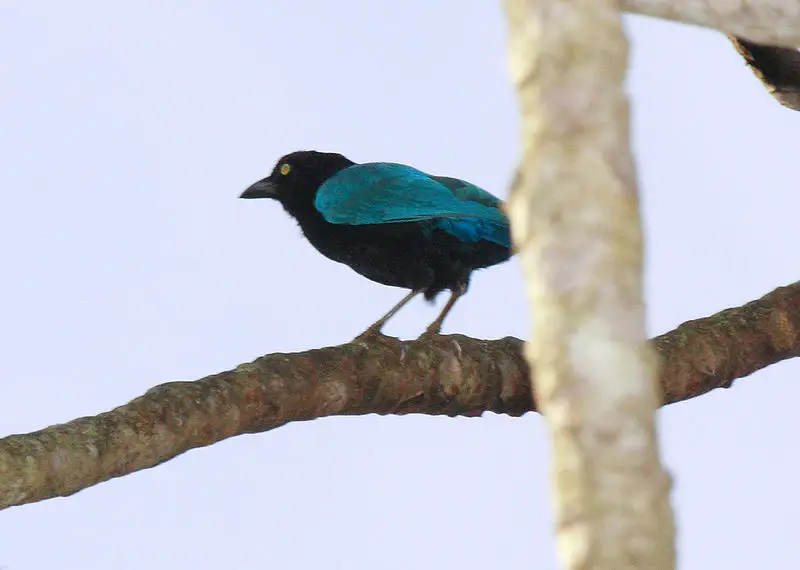
The San Blas jay is a bird native to Mexico. It can be found in subtropical or tropical dry forests. The species is rated as “least concern” by the IUCN, as it is a common bird.
The adult San Blas jay has a length of 27 to 35 cm and weighs between 92 and 122 g. Both sexes are similar in appearance. It belongs to the Corvidae family.
Scientific classification:
| Kingdom | Animalia |
| Phylum | Chordata |
| Class | Aves |
| Order | Passeriformes |
| Family | Corvidae |
| Genus | Cyanocorax |
| Species | C. sanblasianus |
24. Golden Vireo
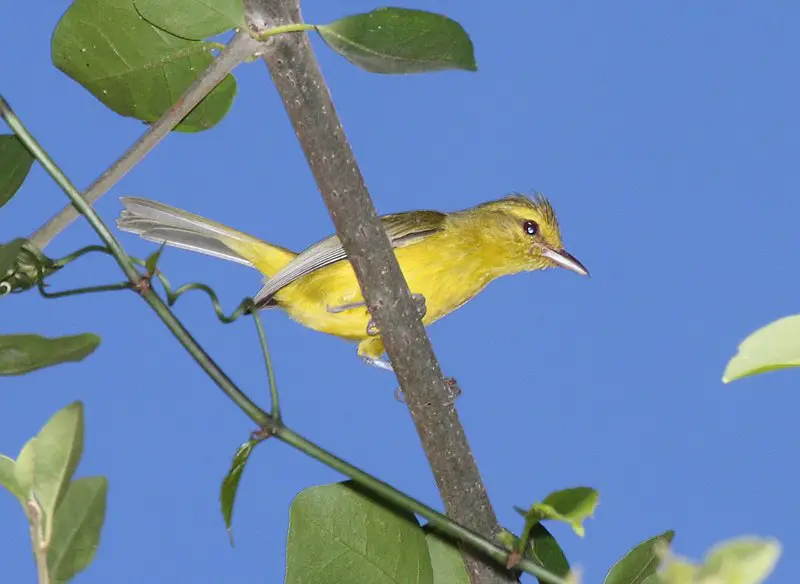
The Golden vireo is a bird species belonging to the Vireonidae family and is found explicitly in Mexico. It has adapted to living in subtropical and tropical dry forests and subtropical and tropical moist lowland forests.
Its distinct coloring led to its name, with its feathers being a golden hue. The bird has a small, but sturdy body with a pointed beak that helps it forage for insects and fruits, which forms the bulk of its diet.
The bird is known for its melodious warbling, and its song is often described as a musical whistle with various trills and warbles.
The Golden vireo is well adapted to its habitat and can often be found in the canopy seeking shelter from predators.
The bird’s natural beauty has led to its widespread popularity among birdwatchers, and it remains an integral part of Mexico’s unique biodiversity.
Scientific classification:
| Kingdom | Animalia |
| Phylum | Chordata |
| Class | Aves |
| Order | Passeriformes |
| Family | Vireonidae |
| Genus | Vireo |
| Species | V. hypochryseus |
25. Yellow Grosbeak
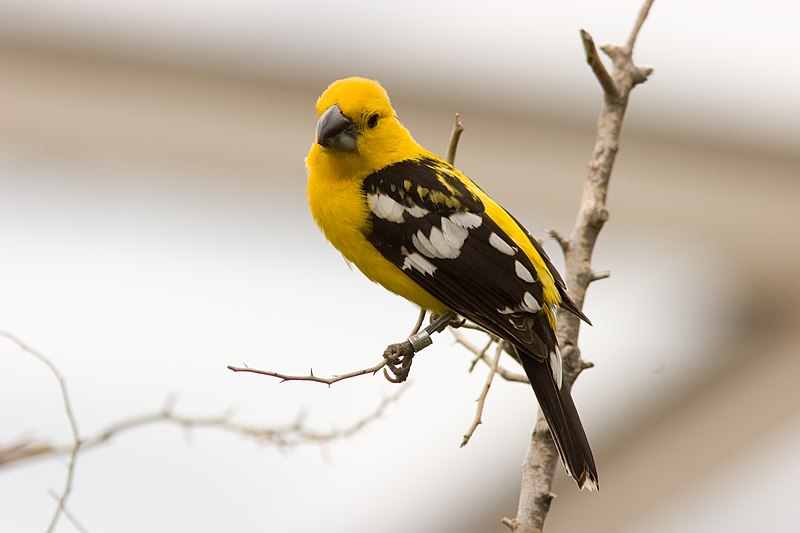
The yellow grosbeak is a medium-sized bird that feeds mainly on seeds. It belongs to the same family as the northern cardinal and other New World grosbeaks.
Its scientific name is Pheucticus chrysopeplus. The bird can be found on the Pacific slope of Mexico from central Sonora to northwestern Oaxaca, as well as in southern Chiapas and Guatemala.
Despite its name, the yellow grosbeak has black feathers with yellow patches on its wings and tail.
Males have a bright yellow head and chest, while females have a more muted yellow color. This species is known for its distinctive call, described as a series of clear whistles.
The yellow grosbeak’s habitat includes forests, woodlands, and scrubland.
Scientific classification:
| Kingdom | Animalia |
| Phylum | Chordata |
| Class | Aves |
| Order | Passeriformes |
| Family | Cardinalidae |
| Genus | Pheucticus |
| Species | P. chrysopeplus |
Also Featured In: Yellow New Mexican Birds,